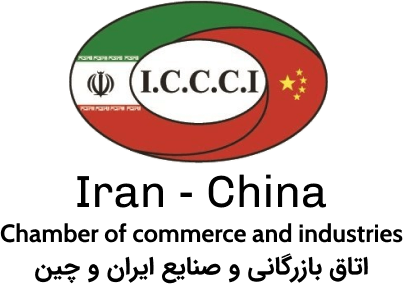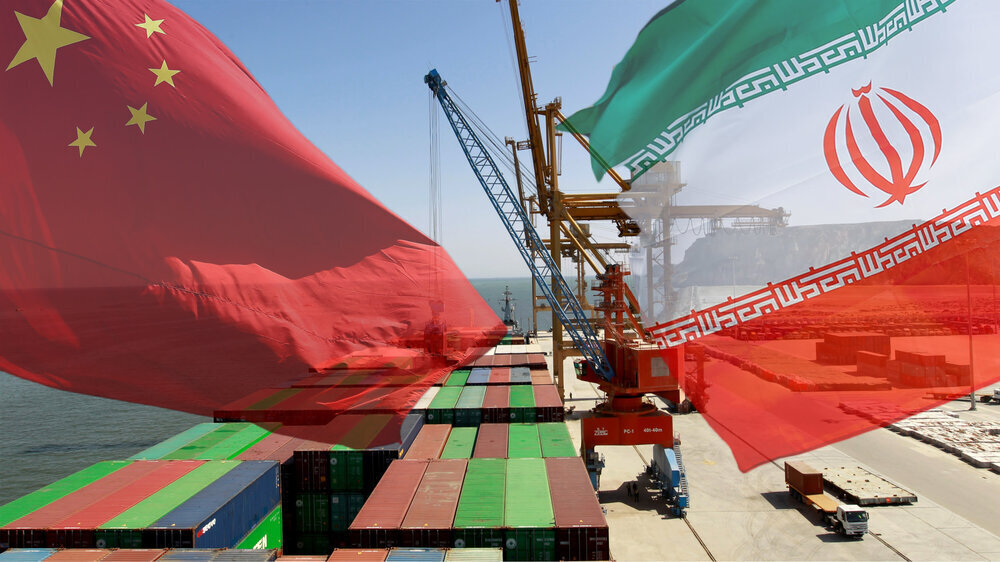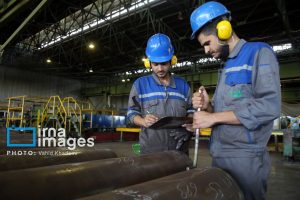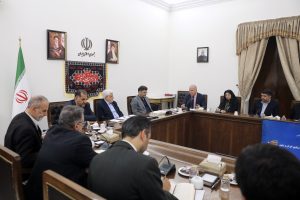Iran exported non-oil commodities valued at $6.9 billion to China during the first six months of the current Iranian calendar year (March 21-September 22), the head of the Islamic Republic of Iran Customs Administration (IRICA) announced.
According to Mohammad Rezvanifar, China was the top export destination of Iranian non-oil goods in the mentioned six-month period.
Based on the data released by China’s customs administration, the value of trade between Iran and China reached $8.540 billion in the first seven months of 2023, registering an 11 percent decline, year on year.
As reported, the Asian country’s export of products to Iran accounted for $6 billion of the total trade.
China’s exports to the Islamic Republic in January-July 2023 registered a 17 percent growth compared to the same period last year.
Also, China imported $2.540 billion worth of products from Iran in the mentioned seven months, registering a 43 percent drop compared to last year’s corresponding period.
China had exported $5.130 billion worth of products to Iran from January to July 2022.
According to China’s customs administration, the trade balance of the two countries in this period reached $3.460 billion in favor of China.
The value of Iran’s economic exchanges with its leading trade partner, China, stood at $6.5 billion during the first six months of 2023.
Based on China’s customs data, the six-month trade between the two countries had not changed significantly in comparison to the figure for the same period in the previous year.
According to the data released by China’s customs administration, the Islamic Republic and China traded $15.795 billion worth of commodities in 2022, $1.035 billion more than the figure for 2021.
As reported, China’s exports to Iran grew by 14 percent in the period under review compared to the preceding year to reach $9.44 billion. The Asian country exported $8.258 billion worth of goods to Iran in 2021.
The value of Iran’s non-oil exports to China, however, registered a two-percent decrease in 2022, reaching $6.355 billion. Iran exported $6.502 billion worth of goods to China in 2021.
Iran’s share of China’s total global trade last year was only 0.25 percent. China’s trade with the world reached $6.308 trillion in 2022, of which $3.593 trillion was the share of the country’s exports and $2.715 trillion was related to imports. China’s global trade grew by 4.4 percent last year.
China is one of Iran’s main trade partners that has maintained strong trade ties with the Islamic Republic despite the strict U.S. sanctions.
Iran and China officially signed the document for 25-year comprehensive cooperation in March 2021.
The document was signed between Iran’s former Foreign Minister Mohammad Javad Zarif and Chinese Foreign Minister Wang Yi at the Iranian Foreign Ministry.
Back in December 2022, Iran and China finalized 16 memorandums of understanding (MOU) under the framework of the two countries’ strategic 25-year agreement.
The MOUs were signed in an Iran-China comprehensive cooperation program summit which was held in Tehran on December 13 in the presence of Iran’s First Vice President Mohammad Mokhber and China’s Vice Premier Hu Chunhua.
The summit was focused on four areas explored by four committees between the two countries with the aim of paving the way for the implementation of the 25-year agreement.
Iran and China also signed 20 memoranda of understanding in the presence of the presidents of the two countries in Beijing in mid-February.
Heading a high-ranking delegation, Iran’s President Ebrahim Raisi was on a three-day state visit to China starting February 14.
During President Raisi’s visit to China, Tehran and Beijing signed a number of bilateral cooperation documents in the fields of agriculture, trade, tourism, environmental protection, health, disaster relief, culture, and sports.
The documents include agreements in the field of transportation and industry worth $12 billion and $3.5 billion, respectively; the agreements cover various joint projects like the high-speed rail link between Tehran and Mashhad, and investment in the Imam Khomeini Airport City.
Investment in Iran’s southeastern Mokran Coast and the purchase of Iranian oil were also mentioned in the documents.
Raisi’s visit served as an example of the high level of mutual trust between China and Iran, as well as a milestone for bilateral ties.
Then in mid-July, the agreements signed between Iran and China during President Raisi’s trip to Beijing in mid-February were turned into specified projects during the two countries’ joint cooperation committee meeting, the Iranian finance and economic affairs minister announced.
Ehsan Khandouzi left Tehran for Beijing on July 12 to attend the Iran-China Joint Cooperation Committee meeting, which was held after four and half years.
“With the constructive atmosphere of the committee, we will soon witness good events in the fields of business and investment”, the official wrote on his Twitter account on July 16.
Khandouzi further announced that Iran and China are going to begin the execution of some joint projects agreed upon in February by the presidents of the two countries, as of the following month.
According to the minister, the necessary follow-ups regarding the mentioned projects have been made over the last five months and the final decisions for the start of their implementations were made during a joint business event on July 13.
“President Raisi had an important trip to Beijing last winter and good agreements were made with the president of China; in this regard, the necessary follow-ups were made by various ministries during the last five months, and on Thursday (July 13) the first joint committee between Iran and China was held after 4.5 years,” Khandouzi said.
“China is Iran’s largest trading partner and the most important destination for the export of Iranian goods and an important part of our imports are also from China. Last year, China’s share in Iran’s (non-oil) trade was 24 percent,” the minister added.
Back in early April, the Chinese ambassador to Tehran said: “This year is a good year for Iran-China relations.”
Chang Hua made the remarks in a meeting with the members of the Iran-China Joint Chamber of Commerce and a number of Iranian traders and businessmen, who conduct trade with China, held at the place of the Iran Chamber of Commerce, Industries, Mines, and Agriculture (ICCIMA) in Tehran.
Referring to China’s growing economy, the envoy said this year is a good year for Iran-China relations, adding that during the meeting between the leaders of the two countries, important agreements were made, including the implementation of the 25-year cooperation agreement between the two countries, and a number of bilateral cooperation documents were signed in the fields of agriculture, tourism, culture, relief, and rescue, etc.
Majid-Reza Hariri, the head of the Iran-China Joint Chamber, also emphasized the desire of Iran’s private sector to develop business relations with China and said there are obstacles in this direction. Among other things, issuing visas for Iranian businessmen, especially for their presence at trade fairs in China, is associated with problems, and facilitating it will definitely help the development of relations between the two sides.
Meanwhile, in a meeting with Chinese ambassador to Tehran in late September, the head of the Iran Chamber of Commerce, Industries, Mines and Agriculture (ICCIMA) announced the establishment of a special working group for the development of trade relations with China.
“Considering the importance of developing trade relations with China, a special working group for the development of trade relations with China has been formed with the aim of further activating the private sectors of the two countries at the level of the heads of chambers of commerce,” Hossein Selahvarzi stated.
Stating that the Belt and Road Initiative will create good opportunities for both sides, he said: “In addition to the bilateral relations between the government sectors of Iran and China, we have new plans to increase the cooperation between the private sectors of the two countries under the framework of the BRICS group and the Shanghai Pact.”





